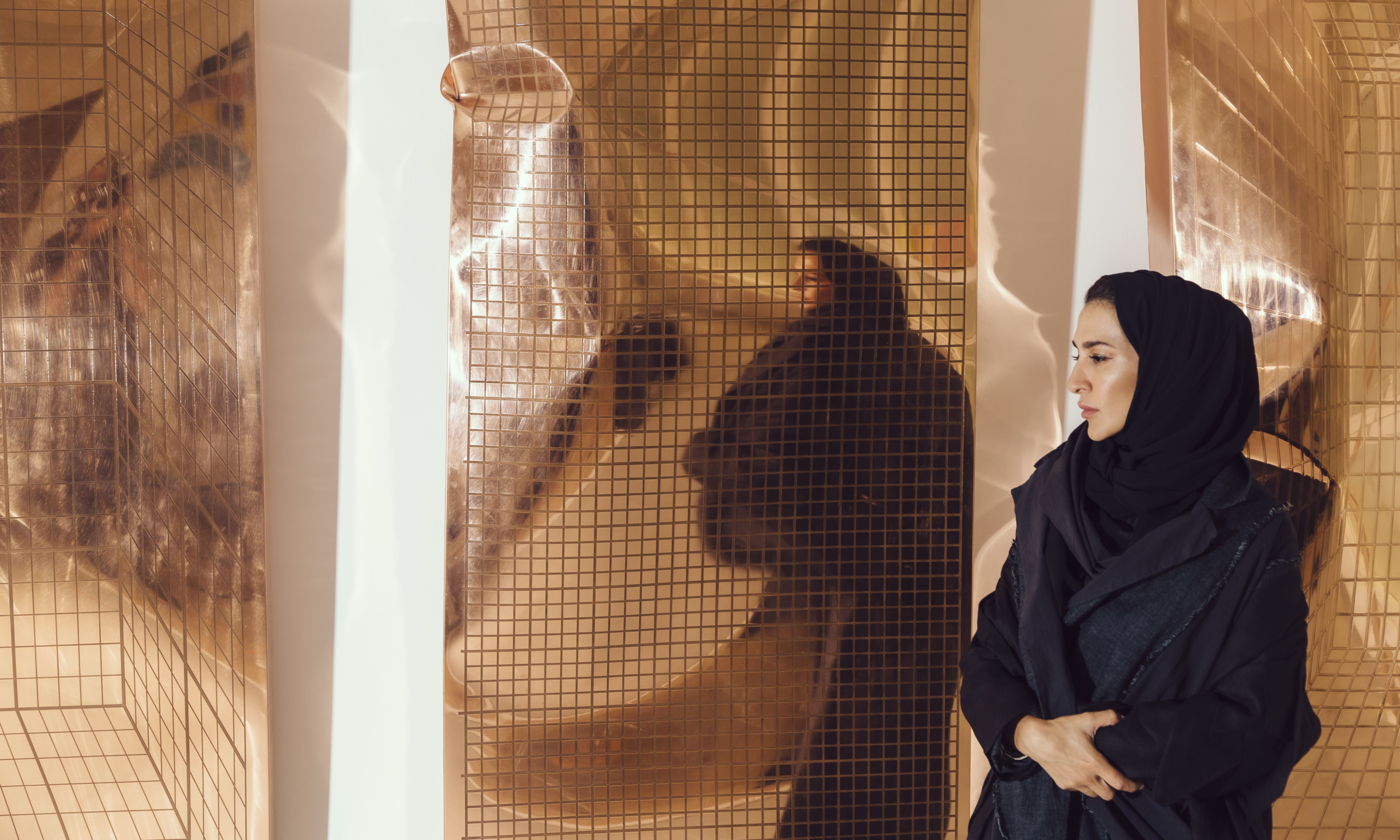Shaikha Al Mazrou Photo: Saeed Khalifa
Ten artists from across the Gulf have been nominated for the second Richard Mille Art Prize. The full list can be found here.
Work by the artists is on show at Louvre Abu Dhabi until 19 March and the winner will be announced 20 March.
Hard cushions and soft, yielding stone: Shaikha Al Mazrou’s work often confounds our understanding of materials and their properties. In her 2021 work The Plinth, four columns of Carrara marble are crumpled and drawn together with a yellow bow. Al Mazrou’s largest sculpture yet, Red Stack, exhibited at the 2022 Frieze Sculpture show in London, is a teetering pile of red cushions made out of fibreglass. Other works have seen folded paper shapes transmuted into steel.
Dubai-born and based, Al Mazrou did her MFA at Chelsea College of Arts in London and is currently a visiting assistant professor at NYU Abu Dhabi. Her work is inspired by minimalism and conceptual art, and artists such as Paul Klee, Carl Andre and Wassily Kandinsky. She describes her art as “expressions of materiality, the articulations of tension and the interplay between form and content.” She often uses mass-produced materials in her work, such as electronic waste or construction materials, experimenting with these resources to create abstract geometric arrangements.
Shaikha Al Mazrou's A Still Life of an Ever-changing Crop Field (2022) at Louvre Abu Dhabi
Photo: Augustine Paredes – Seeing Things. Courtesy Department of Culture and Tourism, Abu Dhabi. Artwork © the artist
Her work for the Richard Mille Art Prize, called A Still Life of an Ever-changing Crop Field, is a visual departure from previous artworks but retains her interest in materials. Discs of varying sizes lie on the gallery floor. Made from glazed ceramic, they look like lozenges or buttons; all are inscribed with circular ridges.
Al Mazrou took the forms from crops planted in the desert, these geometric forms being a symbol of human intervention, with the arid land made productive by modern agricultural techniques. The exhibition wall text explains: “Fascinated by the mapping of the crops’ location, their systematic placement and rotations, the artist questions this hybrid creation of modern engineering. These calculated, circular shapes are non-native to the land, placed in an environment where they do not belong, and find nature’s place in a world invaded by human imprint.”

